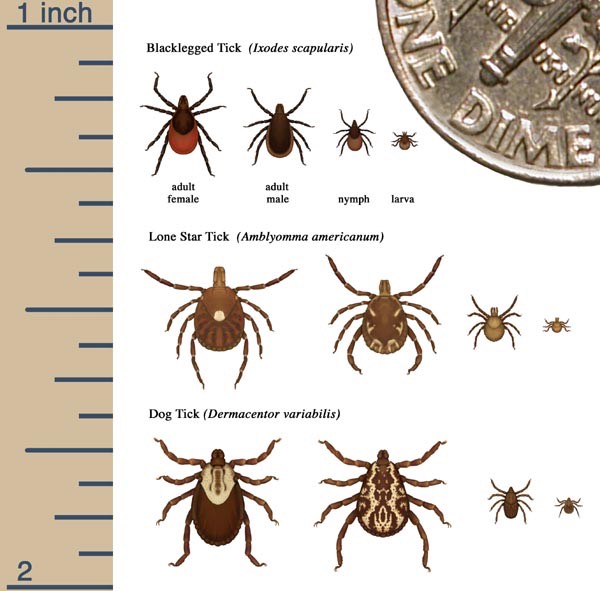You can reduce your chances of infection or other injuries by searching for, and promptly removing, attached ticks.
We suggest that you save the tick and submit it (or good digital images) to IdentifyUS for proper identification and to learn more about it and any associated risk of infection. Gaining detailed insight about the tick can and will be useful to you and your doctor in assessing risk. We can help by evaluating these parameters:
• kind (species) of tick you’ve removed. Why? Each kind of tick may transmit certain microbial pathogens specific for that tick. For instance, deer ticks may be infected by and transmit the agents of Lyme disease, human babesiosis and yet other infections. Dog ticks do not transmit those same pathogens, but they may transmit yet other kinds of infections. Follow this link to find out about specific tick-borne pathogens.
• age (stage of development) of the tick. Risk from deer ticks is greatest in their nymphal and adult stages; larvae are rarely – if ever – infected. We determine the tick’s stage of development by examining the tick or images you upload.
• duration of attachment (how long it has been feeding). Because the likelihood of pathogen transmission increases with each passing day, knowing the feeding duration can be a critical consideration. IdentifyUS can estimate how long a tick has fed based on direct observation of the specimen, or even by good images of the tick itself. See this image as an example of how much a tick swells while engorging on blood
We will examine the actual specimen as well as digital images of your tick and will provide you with valuable insight based on the above criteria. So, save the tick and have it evaluated! For more information on this process, access our Specimen Evaluation Form here.

Image from CDC - Division of Vector-Borne Diseases (DVBD)
